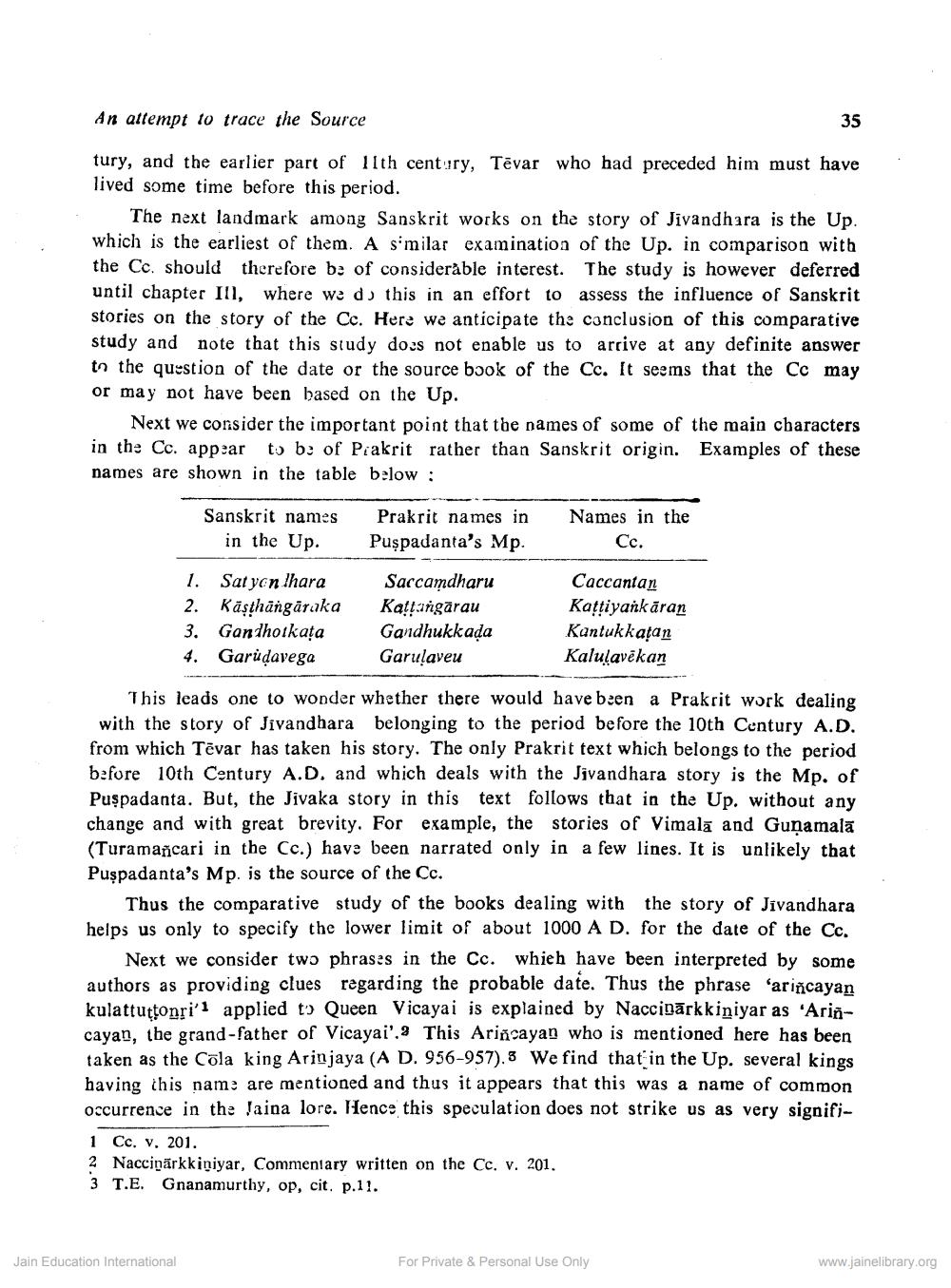________________
An attempt to trace the Source
35
tury, and the earlier part of 11th century, Tēvar who had preceded him must have lived some time before this period.
The next landmark among Sanskrit works on the story of Jivandhara is the Up. which is the earliest of them. A similar examination of the Up. in comparison with the Cc. should therefore be of considerable interest. The study is however deferred until chapter IN, where we do this in an effort to assess the influence of Sanskrit stories on the story of the Cc. Here we anticipate the conclusion of this comparative study and note that this study dous not enable us to arrive at any definite answer to the question of the date or the source book of the Cc. It seems that the Cc may or may not have been based on the Up.
Next we consider the important point that the names of some of the main characters in the Cc. appear to be of Piakrit rather than Sanskrit origin. Examples of these names are shown in the table below :
Names in the
Sanskrit names
in the Up.
Prakrit names in Puspadanta's Mp.
Cc.
1. Sat yon lhara 2. Rāsthāngaraka 3. Gandhorkata 4. Garudavega
Saccamdharu Kattangārau Gandhukkada Garulaveu
Caccantan Kattiyankāran Kantukkatan Kalulavēkan
This leads one to wonder whether there would have been a Prakrit work dealing with the story of Jivandhara belonging to the period before the 10th Century A.D. from which Tēvar has taken his story. The only Prakrit text which belongs to the period before 10th Century A.D, and which deals with the Jivandhara story is the Mp. of Puspadanta. But, the Jivaka story in this text follows that in the Up. without any change and with great brevity. For example, the stories of Vimala and Gunamalā (Turamancari in the Cc.) have been narrated only in a few lines. It is unlikely that Puşpadanta's Mp. is the source of the Cc.
Thus the comparative study of the books dealing with the story of Jivandhara helps us only to specify the lower limit of about 1000 AD. for the date of the Cc.
Next we consider two phrases in the Cc. whieh have been interpreted by some authors as providing clues regarding the probable date. Thus the phrase "ariñcayan kulattuttonri'i applied to Queen Vicayai is explained by Naccinārkkiniyar as 'Arincayan, the grand-father of Vicayai',2 This Ariñcayan who is mentioned here has been taken as the Cola king Arinjaya (A D. 956-957). 3 We find that in the Up. several kings having this name are mentioned and thus it appears that this was a name of common occurrence in the Jaina lore. Hence this speculation does not strike us as very signifi
1 Cc. v. 201. 2 Nacciņārkkiniyar, Commentary written on the Cc. v. 201. 3 T.E. Gnanamurthy, op, cit. p.11.
Jain Education International
For Private & Personal Use Only
www.jainelibrary.org




